Buying a bikini or a swimsuit can sometimes be difficult… Especially finding one that is of good quality and fits your body perfectly. And if you are also concerned about the environment, and you start looking for sustainable swimwear fabrics, it can be quite a challenge!
There is a part of the fashion industry that is increasingly concerned about offering ecological and conscious clothing that is not harmful to the planet. But finding sustainable brands is still a difficult task today.
That´s why at Palestra Couture we want to make it easy for you. And we´ve made a guide with everything you need to know about sustainable swimwear: what it is, what fabrics you should look for when buying it, and much more.
Fast fashion: a problem to sustainable clothes
Fast fashion refers to the practice of copying catwalk styles and then pumping them out fast and cheap. This results in mass-produced garments that are poorly made, with manufacturers and brands foregoing sustainable, ethical, and eco-friendly practices just to get clothes made in time and into the shops.
The rate at which new trends are pumped out makes people want to keep up with what’s trending, and thus throw out last season’s clothing.
It’s become so bad that sometimes you’re even throwing out last month’s clothing, since the fashion industry introduced the idea of 52 micro-seasons instead of just the tradition spring/summer and fall/winter.
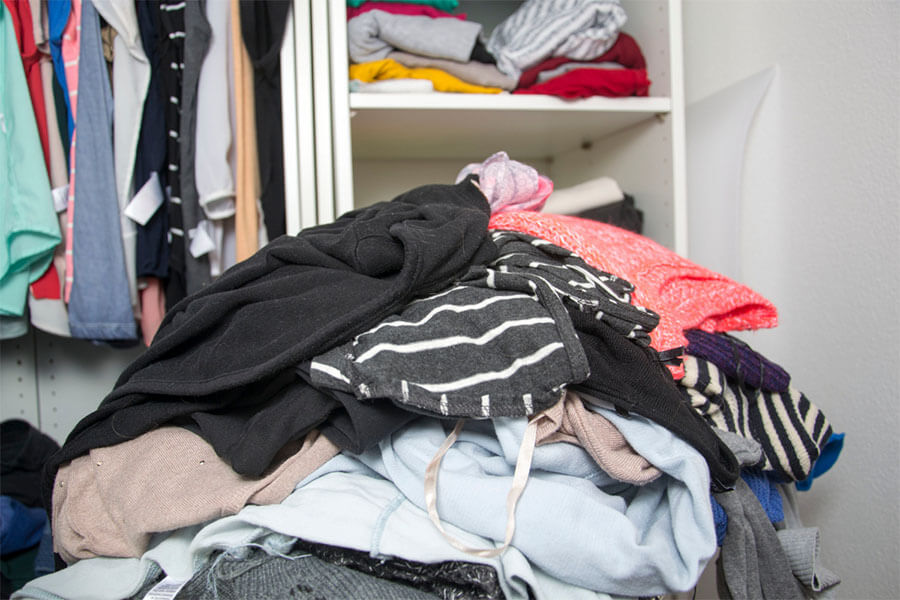
This has resulted in a terrible impact on our planet, with fashion being one of the biggest polluters in the world, along with the perpetration of egregious human rights abuses.
And it’s only getting worse, as globally we consume approximately 80 billion new pieces of clothing every year, 400% more than two decades ago, with the United States being the largest consumer of new textiles.
This includes swimwear, particularly women’s swimwear which comprises 70% of the global market.
What fabrics are non sustainable swimwear usually made from?
Swimsuits are commonly made from polyester and nylon. This is for a number of reasons including cost, durability, comfort, stretch, and the ability of the fiber to hold up in the water.
However, these materials are not the most eco-friendly…
Polyester and nylon are both synthetic fibers that are petroleum based. The petroleum industry is known for contributing polluting emissions into the air.

Turning fossil fuels into plastic and then into fibers is a water and energy intensive process that depletes non-renewable resources. And contributes to global carbon emissions that exacerbate human-induced climate change.
While textile dyeing contributes to water pollution because the leftover water from the dyeing process is dumped into waterways.
And there is more: along with the polluting process that petroleum undergoes to create these synthetic fibers, there is also the problem of microplastics.
What are microplastics?
Microplastics are small plastic particles that are sometimes so small that they are imperceptible. They are the product of the degradation of plastic waste.
Microplastics are found in polyester, nylon, and other synthetic fibers. Since plastic is part of the swimsuit when the fibers start to break down they shed tiny pieces of plastic.
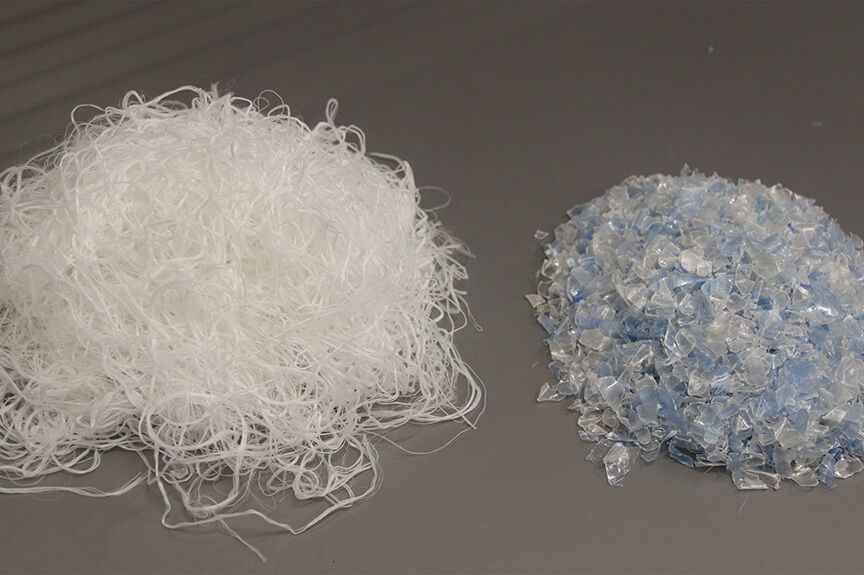
So when we wash these garments or wear the swimwear into the ocean they can shed micro plastics which can cause damage to our waterways, marine life, and more.
So if you really want to take care of the environment, and leave a clean planet for your children, your grandchildren, and the generations to come, it is important that when buying your beachwear you pay attention to the materials of which is made.
What sustainable swimwear fabrics should you look for?
What you can do to assuage the negative environmental impact is look for swimwear made from recycled synthetics like discarded fishing nets and plastic water bottles. This keeps plastic waste out of waterways, landfills, and incinerators, and negates the demand for virgin resources like petroleum.
The fashion industry has responded to this by creating recycled synthetic fabrics like the ones from Bahía Reciclada, which are made with recycled polyester obtained from used PET bottles.
In fact, at Palestra Couture our one-piece swimsuits and bikinis are made with these fabrics!
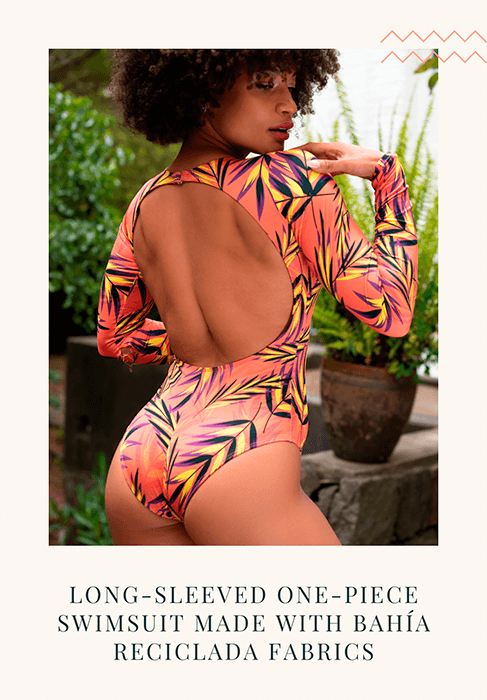
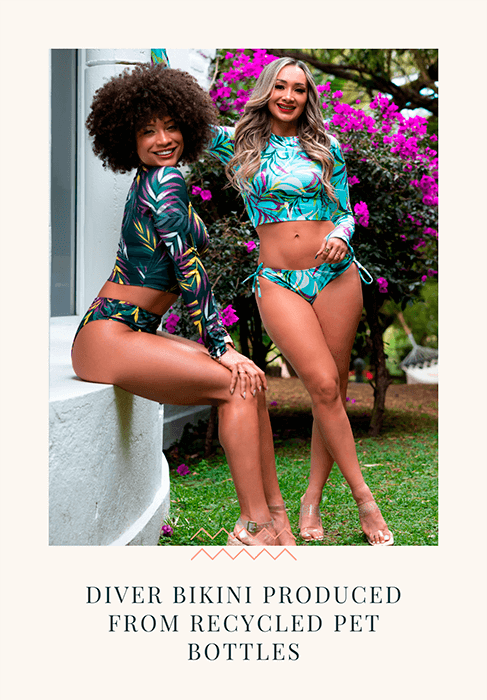
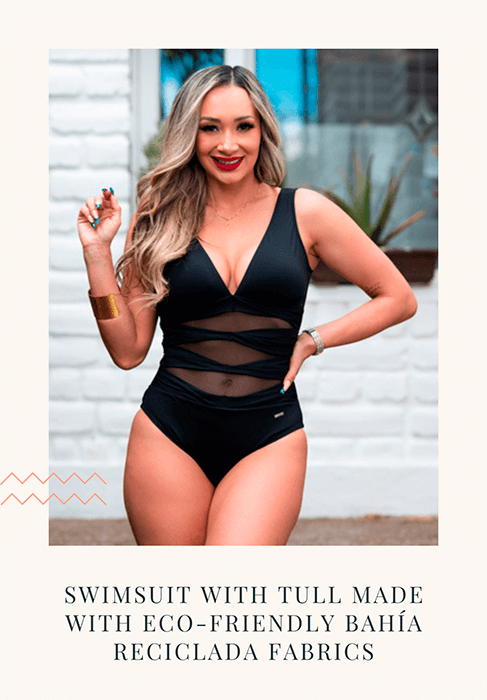
For us, it is very important to give our customers the highest quality in our garments, at the same time that we contribute to creating a better world without chemicals or pollutants.
For this reason, we choose Bahía Reciclada as the main material for our sustainable women’s swimsuits and bikinis.
Our swimwear, thanks to this type of fabric, is durable, with a high fit to the body both dry and in contact with water, and also:
- Reduces the carbon footprint since in the production of our sustainable swimsuits CO2 emissions are reduced by 75%
- Digital printing makes our garments free of chemicals
- And the inks we use, being water-based, do not generate volatile organic compounds that harm the environment
Hopefully this guide on sustainable swimwear fabrics has given you a good idea of how important it is to take care of what type of garments we buy, and that you now have all the information you need to know how to choose your ecological beachwear correctly.
Tell us, do you look at the materials your clothes are made of when buying? Leave a comment below!
